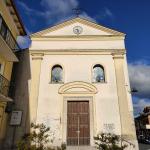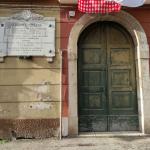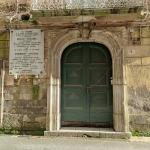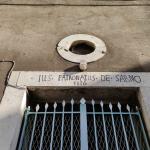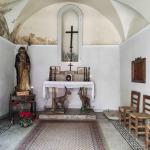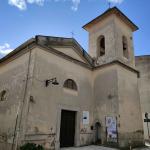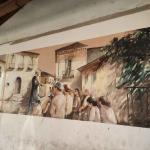The Municipality of Cesinali is located within the area of the Sabato Valley. It is a municipality of 2,594 inhabitants, located 380 metres above sea level and 6 km from Avellino. The territory extends for 3.73 sq km and the adjoining municipalities are: Aiello del Sabato, Atripalda, San Michele di Serino and Santo Stefano del Sole. It's crossed by the Sabato river.
The etymology of the name comes from the term cesine that summarised the concept of “territory completely covered by woods”, and by “cesinare”, or felling trees. The inhabitants are called Cesinalesi and Saint Sylvester and Saint Roch are their patrons.
PLACES OF INTEREST
- Palace of the brothers Rocco and Domenico Cocchia - Built towards the end of the 18th century, it was renovated after the earthquake of 1980 and is located at the beginning of the historic centre of the town, in via San Rocco
- Sabino Cocchia Palace - Typical aristocratic residence dating back to the 19th century, it is in tuff masonry, covered in wood and iron
- Preziosi Palace - Dating back to the 17th century, it was the residence of the Cocchia family and overlooks the main square of the town
- Church of San Rocco da Montpellier (Saint Roch of Montpellier) - Dating from the 18th century, it was formerly a funerary chapel, with an oratory of Saint Roch and Saint Lawrence
- Teatro d’Europa - Theatre founded in 1997 by a spontaneous aggregation of young people, it still hosts theatrical performances and also an acting school
- Church of San Silvestro (Saint Sylvester) - Built in 1749, it has the engraving of this date on the outer wall
- Urciuoli Palace - Built in the 18th century, inside it has a large courtyard characterized by loggias, balustrades and passages with archivolts of architectural detail
- Church of San Silvestro Papa (Saint Sylvester Pope) - Built in the second half of the 16th century, it has a bell tower built in the 18th century and houses the tomb of the aristocratic De Sanctis family
- Chapel of San Nicola di Bari (Saint Nicholas of Bari) - Tuff structure, inserted in the aristocratic residence of the founder Cav. Niccolò Cocchia, seems to have existed already in 1600, enlarged in 1878, to become a private chapel
- Other Palaces - Cavalier Felice Ceci Palace, Vitale Palace, del Franco Palace
- Urciuoli Springs - Located in Villa San Nicola, they are part of the Augusteo del Serino Aqueduct, an ancient Roman construction
EVENTS
- Zeza - Folkloric event connected to the ritualism of the Carnival, it represents a sort of drama between bride and groom
- Rosamarina - Particular event that, since the end of 1800, takes place on Holy Saturday, when, as a sign of peace and good wishes, a pine branch is distributed to each individual family by a group of people who sing songs
- Passion of Our Lord - Dating back to 1950, it is a show that takes place on the evening of Good Friday outdoors and consists of the staging of the Passion of Christ
- Ecological walk in the Cesinalese - It takes place in August and is a walk called “Marcialonga” that began in 1975 by Antonio La Sala and is carried out in the countryside of Cesinali, with a final feast table in the town
- Feast of Saint Roch - It takes place in August and is the religious celebration characterised by the raising of the effigy of Saint Roch (Pannetto), its blessing and the solemn procession
TYPICAL FOOD AND PRODUCTS
- Fiano di Avellino DOCG - One of the finest white wines of Italy and the international market
- Cecatielli and Cicci - Typical handmade pasta seasoned with sauce and fresh beans (cicci)
- Rape e Patane - Typical dish of the peasant culture based on turnip greens and potatoes, which can also be served with wheat pizza and peppers
- Hazelnut - Dried fruit typical of the territory
FUN FACTS
It is said that at the time of the Romans there existed in the Monteuovolo woods a small temple to the divinity Jupiter, considered the father of the gods in the pagan religion, so that place was given the name of “Monte di Giove” in Latin, mous Jovis, hence the name “montejovolo” or “monteuovolo”.
HISTORICAL NOTES
Originally constituted by a small nucleus of houses, Cesinali was, throughout the feudal age, a farmhouse of Atripalda, with which it shared political and administrative events. Both, in fact, were ruled by some of the most prominent aristocratic families of Southern Italy, such as, for example, the Filangieri, the Carafa and the Caracciolo families.
Although it acquired, over the years, a certain autonomy, the town was merged, in 1927, to the neighbouring Municipality of Aiello del Sabato, to then return independent in 1950.
The Irpinian waters contributed to feeding the grandiose underground water distribution system of Neapolis, from the hundreds of intercommunicating underground caves, dating back to the times of the Greek foundation and they were used until the threshold of modern times. Cesinali preserves its vestiges, an incredible heritage not to be missed
Cesinali
Piazza Municipio, 1, 83020 Cesinali AV, Italia
Events
-
On September 21st and 22nd, the village of Valle del Sabato is celebrating to honor San…
Did you like it? Leave a review
Your opinion is important! It will be visible after approval by the editorial staff.
To post a comment you must be an authenticated user. Log in with Social Login
